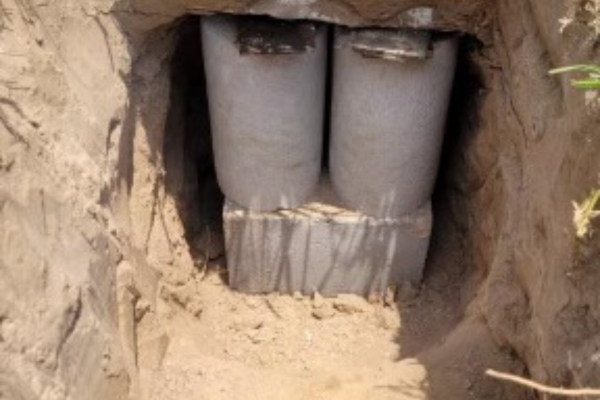Why Foundation Repair OKC is Critical for Keeping Your Property's Stability
Wiki Article
Checking Out Different Techniques of Structure Repair Work for Various Dirt Kinds
Foundation repair is an important aspect of preserving architectural integrity, particularly when thinking about the varied challenges positioned by various dirt types. The complexity of dirt actions under differing conditions requires a tailored technique to fix, ensuring ideal options such as helical piers for unpredictable dirts or chemical cements for natural layers.Understanding Soil Types
Soil kinds play a critical role in the security and longevity of building foundations, making it essential for house owners and building professionals to understand their characteristics and actions. The communication in between dirt and structure can determine the architectural honesty of a structure. There are numerous dirt kinds, each with unique physical residential properties that affect exactly how foundations are made and preserved.Granular dirts, such as sand and crushed rock, supply great drainage and are commonly considered secure. In contrast, cohesive dirts like silts and clays display various behaviors.
Rocky dirts, recognized for their stamina and security, offer exceptional assistance for foundations however might require specific tools for excavation. Conversely, loamy dirts, which are a well balanced mix of sand, clay, and silt, commonly give beneficial problems for structure support due to their moderate water drainage buildings.

Comprehending these soil kinds is crucial for picking appropriate structure repair work approaches, making certain the sturdiness and safety and security of frameworks with time.
Obstacles With Extensive Clay
Amongst the different dirt kinds, expansive clay offers one-of-a-kind obstacles for structure stability due to its tendency to go through significant quantity changes with dampness variation. This kind of dirt swells when wet and contracts when completely dry, which can put in significant pressure on frameworks. These fluctuations can cause foundation breaking, heaving, and negotiation problems, posing significant risks to the architectural stability of buildings.The challenges with large clay are exacerbated by its plasticity index, which measures the soil's capacity to alter shape and quantity. A high plasticity index indicates better potential for activity, enhancing the likelihood of damage to structures. This is especially bothersome in regions experiencing constant or extreme weather modifications, where cycles of damp and dry conditions are typical.
Furthermore, the depth of extensive clay layers can differ, making complex the evaluation and preparation of proper structure repair service approaches. These intricacies need a detailed geotechnical analysis to make certain reliable structure repair service methods are carried out, highlighting the value of attending to extensive clay difficulties with knowledge and care.
Solutions for Sandy Soils
Sandy soils, defined by their huge particle size and reduced communication, existing distinct difficulties for structure stability due to their tendency for changing and erosion. By securing the foundation to much deeper, much more secure soil layers, these systems can give the required support to counteract the changing nature of sandy dirts.Another advised method is the application of soil stablizing techniques. Chemical grouting, for circumstances, entails infusing a stabilizing representative right into the soil, which boosts cohesion and minimizes leaks in the structure. This process aids to solidify the sandy substrate, consequently reducing the danger of disintegration and movement.
Furthermore, mounting proper drain systems is crucial in sandy soil problems. Guaranteeing ample drainage can avoid water build-up around the structure, which frequently worsens disintegration and dirt displacement. Techniques such as French drains or surface grading can be utilized to route water far from the building perimeter.
Dealing With Clearing Up in Loamy Soils
Fertile dirts, recognized for their well balanced mix of silt, clay, and sand, supply an abundant base for many structures but can in some cases result in foundation settling because of their special structure. This well balanced texture offers superb water drainage and nutrient retention, making it ideal for agriculture and landscaping. However, this same quality can become problematic for foundations, as changes in dampness content can create the dirt to increase or agreement, resulting in settling.Precise dirt testing is vital to identify the particular make-up and moisture web content of the loam. Once information is collected, implementing appropriate drain options is essential to maintain regular dampness degrees, therefore reducing the risk of dirt contraction or growth.

Cutting-edge Repair Service Techniques
In the world of structure fixing, cutting-edge strategies are constantly being developed to deal with the facility challenges posed by numerous soil conditions. As dirt kinds vary considerably in their architectural properties, standard methods might not always suffice. The development of brand-new innovations in structure repair offers extra tailored options, making certain security and longevity.One noteworthy development is using helical piers, which are specifically effective in large or unsteady dirts (foundation repair okc ok). These piers are screwed into the ground up until they get to a stable layer of soil, supplying strong assistance for the foundation above. This technique reduces interruption and is versatile to different dirt kinds, making it a versatile option
An additional cutting-edge technique is the application my review here of polyurethane foam injection. This approach entails injecting high-density polyurethane foam below the foundation to fill up spaces and visit their website stabilize the structure. It is a less invasive option to conventional base, using fast installation with minimal disturbance to the surrounding area.
Furthermore, dirt stablizing methods, such as making use of chemical grouts, have gotten traction. These substances enhance dirt strength and reduce permeability, avoiding future moving. Jointly, these cutting-edge fixing strategies provide effective solutions for the diverse challenges positioned by varying soil conditions.
Conclusion

Structure fixing is a crucial facet of maintaining structural honesty, particularly when taking into consideration the diverse challenges presented by various soil types (foundation repair okc ok). The complexity of soil actions under varying conditions necessitates a customized strategy to fix, ensuring ideal solutions such as helical piers for unsteady soils or chemical cements for cohesive layers. By anchoring the structure to much deeper, more stable soil layers, these systems can supply the essential assistance to counteract the shifting nature of sandy soils
Structure fixing calls for mindful factor to consider of soil kinds to make certain stability and durability. Chemical grouts boost soil strength and decrease permeability in natural dirts.
Report this wiki page